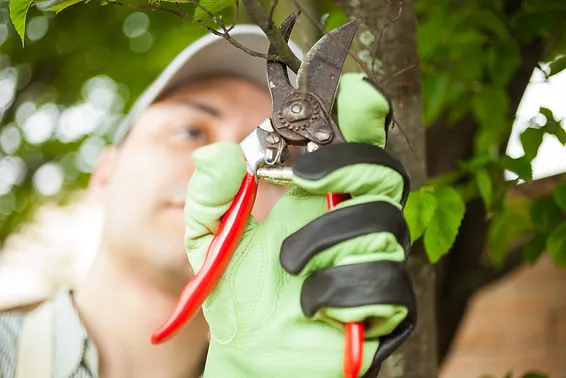
At a basic level, tree pruning involves removing limbs that are dead, damaged or structurally weak. Unlike trimming, which is focused on beauty and aesthetics, pruning is done to improve tree health and reduce the risk of injury or property damage from falling branches.
Regular pruning can help protect your trees from disease and insect infestation, ensuring that they continue to flourish for years to come. However, to get the best results, you need to use the correct techniques and tools.
Standard Tree Pruning Methods
Certified Arborists typically use one of four basic approaches to pruning:
Cleaning to decrease the chance of dead, dying or diseased branches from falling
Thinning live branches at the crown’s edge to increase sunlight penetration and air movement
Raising to provide vertical clearance and keep branches from blocking buildings, signs and vistas
Reducing to reduce height and/or spread for utility line clearance or clear vegetation from affecting nearby structures
Harmful Tree Pruning Practices
Poor pruning practices can damage trees, stunting their growth. The following techniques are not recommended:
Topping to reduce size by cutting the trunk and upper main branches down to stubs
Lion’s tailing to thin the interior, leaving foliage only at the top of the crown
Rooster tailing to thin out palm branches for protection from heavy wind
Tools for Proper Tree Pruning
When pruning, you need to use the right tools. Hand pruners are appropriate for cutting limbs that are less than an inch wide. Branches that are roughly two inches in diameter can be cut with either lopping shears or a pole pruner. Larger limbs require pruning saws. Whichever tool you end up using, make sure it’s sharp. And if you’re pruning diseased limbs, sanitize the blade between cuts.
Tree Pruning Tips from the Pros



